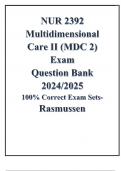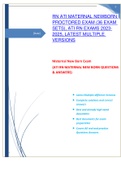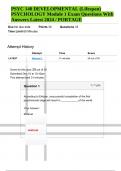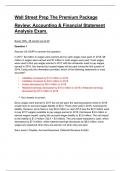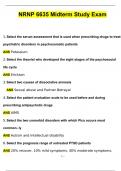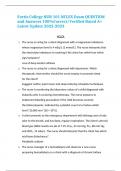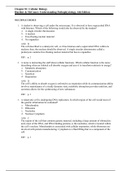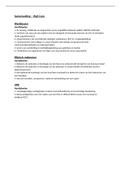Exam (elaborations)
NUR 2392 Multidimensional Care II (MDC 2) Exam (Question Bank 2024/2025) 100% Correct Exam Sets- Rasmussen
- Institution
- Rasmussen College
NUR 2392 Multidimensional Care II (MDC 2) Exam (Question Bank 2024/2025) 100% Correct Exam Sets- Rasmussen
[Show more]
